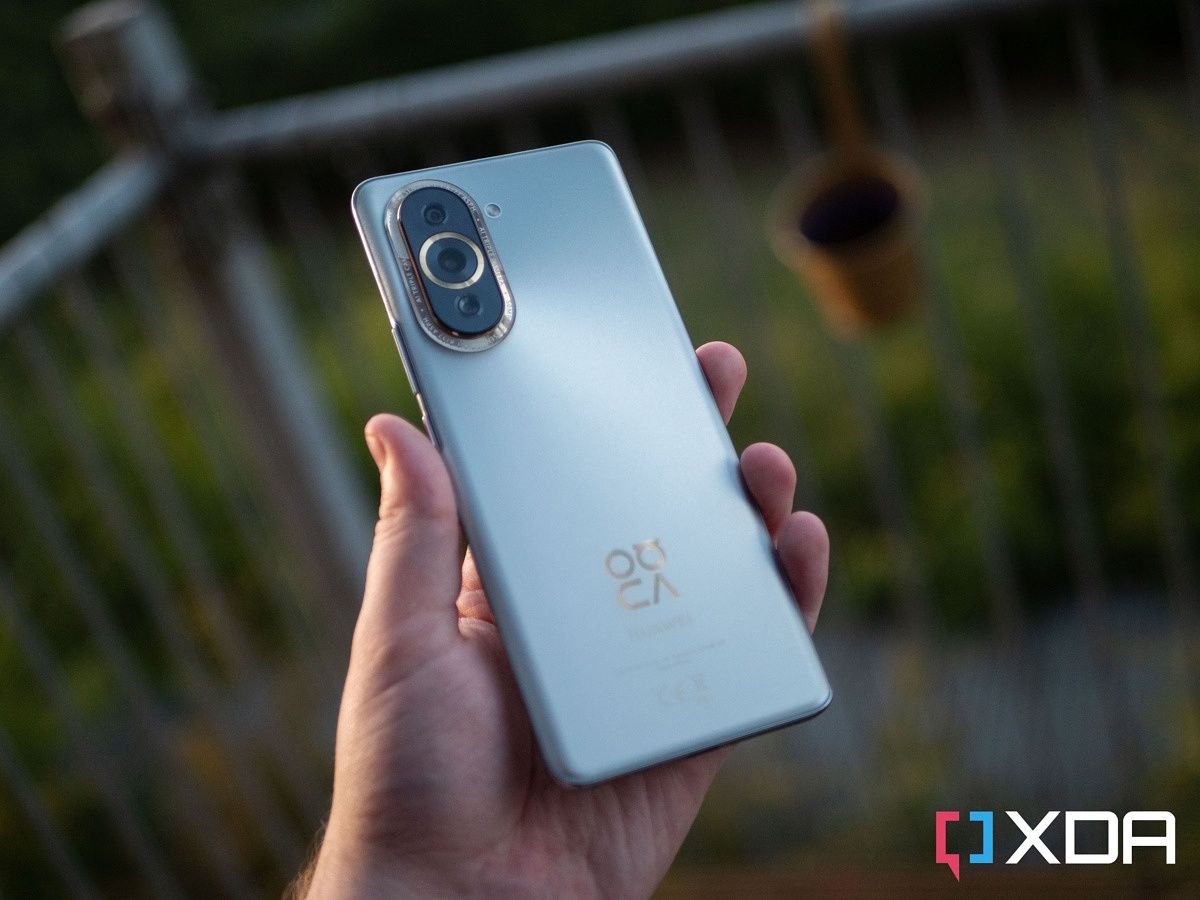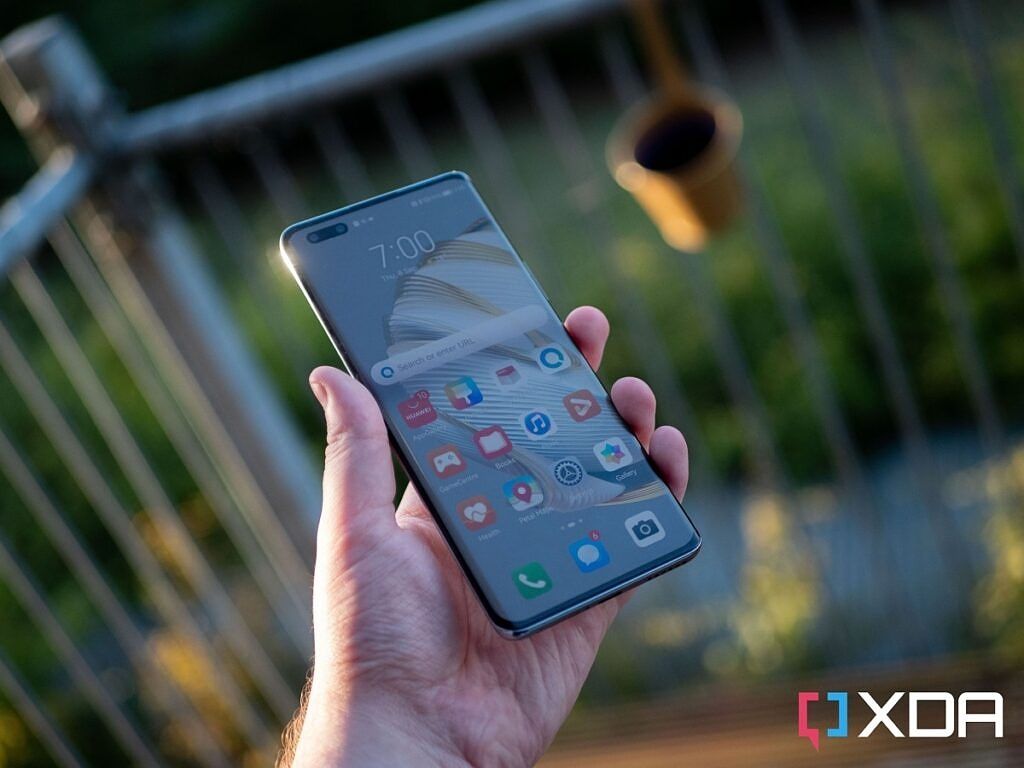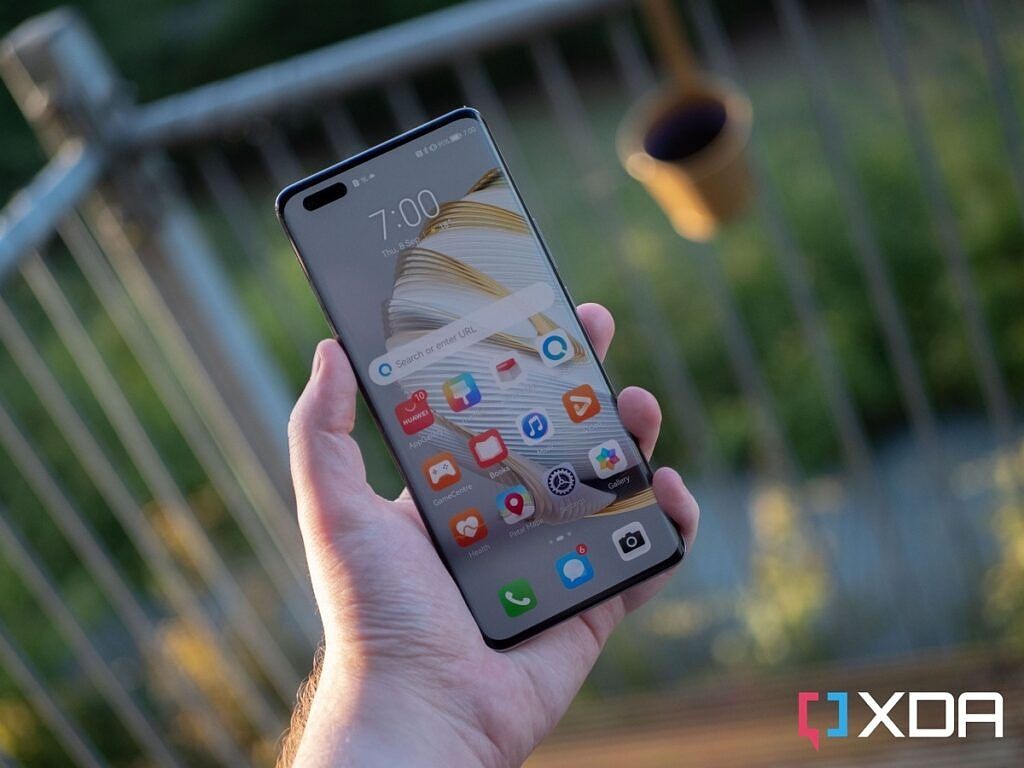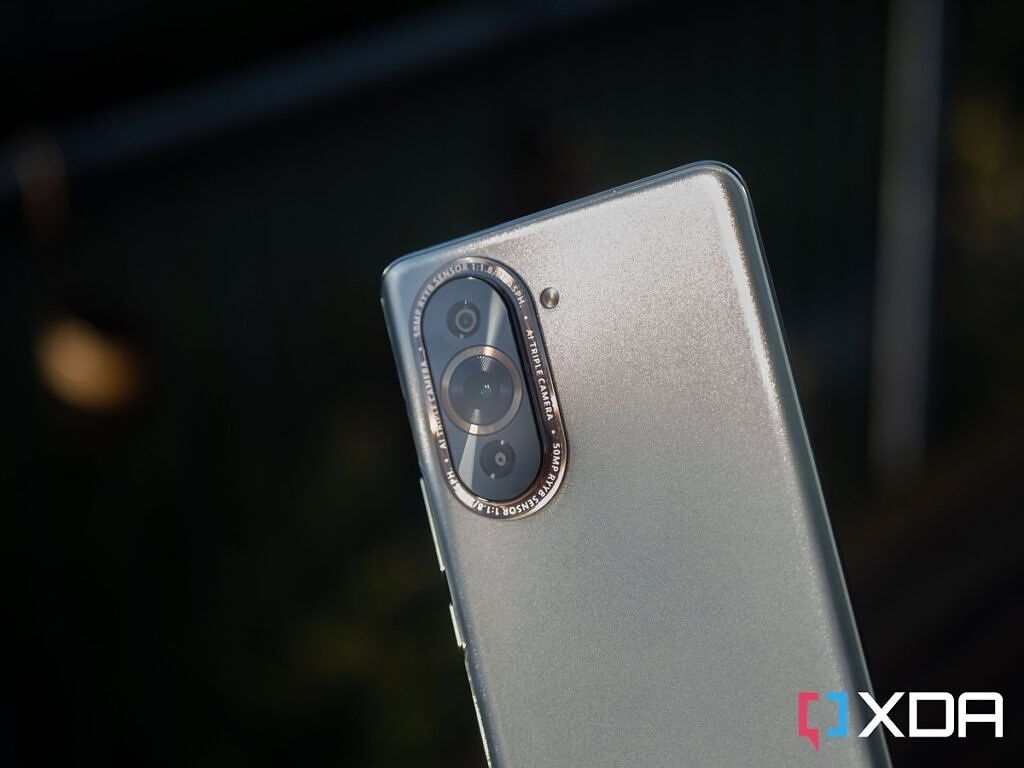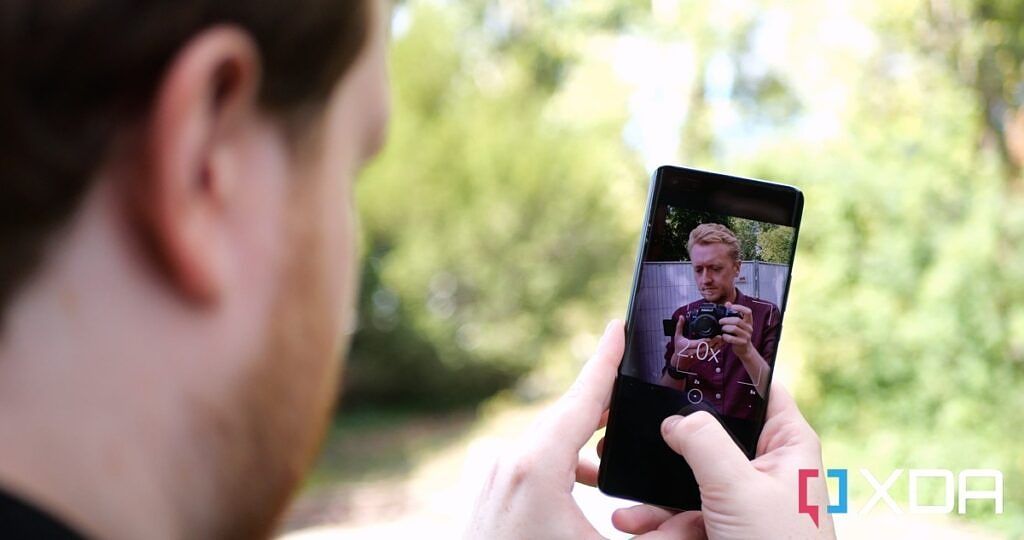The Huawei Nova series is an interesting series from the Chinese company aimed primarily at younger people, coming in at a more affordable price tag. It typically packs some flagship-level features but downgrades on some others, and the Huawei Nova 10 Pro sticks to that philosophy with some added bling.
For what it's worth, this is the same old Huawei situation as it has been with every other device before it. You don't get the Play Store, you get AppGallery, and any of the same difficulties you may have had with AppGallery in the past continue to apply here. That's not to say there aren't improvements -- in fact, AppGallery is starting to become usable for me as a pretty decent alternative. However, for most people, it's still not at the level that's worth switching to yet. It works pretty well for most things, but it's not perfect and I still find myself struggling with certain tasks quite frequently.
I like the Nova 10 Pro as a smartphone, but as usual, the software situation can be difficult to overcome at times, especially with the price.
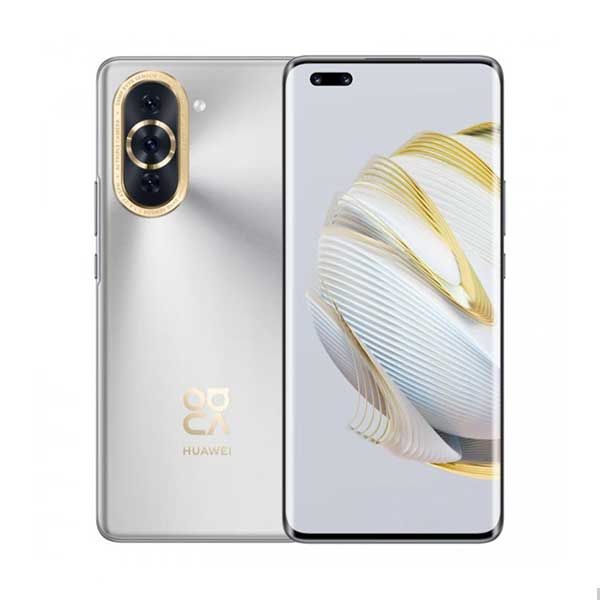
HUAWEI Nova 10 Pro
The Huawei Nova 10 Pro is a stylish upper mid-range smartphone from Huawei that packs some pretty cool photography tech inside.
Huawei Nova 10 Pro: Specifications
|
Huawei Nova 10 Pro |
|
|---|---|
|
CPU |
Snapdragon 778G 4G |
|
Dimensions and weight |
|
|
Display |
|
|
Camera |
|
|
Memory |
8GB RAM, 128GB/256GB |
|
Battery |
4,500mAh |
|
Network |
LTE, 4G only |
|
Sensors |
Optical in-display fingerprint sensor, Accelerometer, Barometer, Gyro sensor, Geomagnetic sensor, Hall sensor (analog), Proximity sensor, Light sensor |
|
Ports |
USB-C 2.0 |
|
OS |
Android 12 with EMUI 12 |
|
Colors |
Black, Silver, Green, Violet |
|
Price |
Starts at €699 |
About this review: I received the Nova 10 Pro for review from Huawei on my recent trip to IFA in Berlin. While the company sponsored my travel to attend the event alongside other media persons, it did not have any input into the contents of this review.
Design
The Huawei Nova 10 Pro's design is pretty, though it's a bit over-the-top. The front of the phone is pretty nice, with a large 6.78-inch 120Hz AMOLED display. There's a pill-shaped cut-out for the camera on the top left, and it contains two front-facing cameras. However, it's not for face unlock -- one of them is a 60MP front-facing camera for selfies that supports up to a 100-degree field of view, and the other is a 2x telephoto.
On the back, though, is where things get really bling. The camera module is surrounded by a gold ring, and the primary sensor in the center of the camera island is also surrounded by gold. The back of the phone has a slightly-textured metal of some kind, with the company's nova logo emblazoned at the bottom... also in gold. It looks good for the most part, but I think that the camera module is a little bit tacky.
It's a "youthful" design I guess, which is obviously what Huawei has been going for here. It feels premium in the hand, and I don't have a whole lot of criticisms aside from how over-the-top it all is. If it weren't for the crazy gold rings, I think this would be one of my favorite designs in a budget phone released this year. The included case does cover the gold quite a bit, so you can just use that if you'd like.
There are dual speakers at the top and bottom, pretty decent haptics, and the display is curved. There's also an optical under-display fingerprint sensor at the bottom. All of these add to the premium feel of the phone, especially as curved displays (practicality aside) are typically only reserved for flagship smartphones. We've seen more and more mid-range options arrive with one, but the Huwaei Nova 10 Pro's entire job is to come across as flagship-like as possible.
Huawei Nova 10 Pro: Camera
To be fair to Huawei, the company hasn't really lost its touch when it comes to cameras. The Nova 10 Pro has a pretty good camera system in tow. Some of the most powerful camera hardware here goes to the front-facing camera system though, packing a 60MP ultra-wide. It's a pretty high-quality sensor that looks good, and I think that it makes sense for the target market this device is aimed at.
Another feature that's pretty cool as well is the front-facing camera's 2x telephoto. Have you ever seen a video on a social media platform where it shows the user zooming into something behind them? That's exactly what it's for. It's not exactly my cup of tea, but it makes total sense to include it in a phone aimed at younger people. The quality isn't bad either, and the wideness of the ultra-wide is great for fitting lots of people into a single photo. The selfies below are compressed, but you can find the uncompressed versions in the Flickr album.
Finally, the cameras on the back are pretty good as well. I noticed in particular that they did well in low light, and I got some pretty impressive shots when out on a night-time walk. Oddly, I ran into some weirdness when taking photos during the day of the sky, but I imagine that these can be ironed out over time. You can view uncompressed photos in the Flickr album that's embedded below.
Huawei Nova 10 Pro: EMUI
The Huawei Nova 10 Pro comes pre-loaded with EMUI 12 based on Android 12. There are no Google Play Services as you already know, so you'll need to make use of Huawei's own AppGallery for getting applications. As time goes on, it does improve for sure. There are regional-specific applications that you can find on the store, and more and more apps are being added every day. Some Irish and German banks still aren't accessible on it, but it's certainly a better situation than it used to be.
Sadly, though, for most people, it's still hard to recommend a Huawei phone, despite all the effort and progress on it. It's getting there, and I finally understand where the company is coming from in its HMS endeavors, but it's not far enough that simply anyone can use a Huawei phone. There are budget options out there that will do a lot of what Huawei can do, but with Google Play Services in tow that makes it as easy as ever to switch and get all of your favorite apps. I do find that Curve Pay helps bridge some gaps though, as it was a big reason why I couldn't make the switch previously.
The problem is, switching to a Huawei phone is switching to an entirely new ecosystem. In the same way, a user may switch from Android to iPhone, for the purposes of argument, a user could switch from "Android" (as we know it) to Huawei's EMUI. It's all Android, but the jump to EMUI is a lot larger of a leap and requires getting acquainted with an all-new ecosystem with its own quirks. When you switch to iPhone, you won't have access to all of your apps either, but there are plenty of alternatives on the App Store.
However, that would work if it weren't the case that not every essential app is on AppGallery. If my banking apps were on AppGallery, if I could consistently use my phone to pay in stores, and if I could easily get my emails on my phone, then I'd be interested. However, none of that is the case, and installing another app for email like Blue Mail (which Huawei recommends) isn't a perfect replacement for Gmail, either. I've also found that sometimes, AppGallery search/Petal Search is awful, and I need to go to my browser to search for an app there instead. A prime example of this that I ran into was 3DMark.
I understand now what Huawei is going for, and it's the creation of an entirely different ecosystem. It's not Android (well, it is, but it's not the same ecosystem), and it's obviously not Apple, either. Huawei wants to be a third player. It's getting there, but until the kinks are ironed out, it's hard to justify a switch to most people thus far. I think a third player in the space is good competition though, and as they say, Rome wasn't built in a day. Maybe it's not good yet, but who knows what the future may hold for AppGallery.
One thing I will say though is this: why on earth is there a splash screen advertisement when I open AppGallery?
Huawei Nova 10 Pro: Performance
The Huawei Nova 10 Pro packs a 4G version of the Snapdragon 778G, and it's a pretty great performer. In normal usage, you won't notice any problems whatsoever, and it'll handle pretty much everything you can throw at it. The only lag I've faced when using this device has been in the camera viewfinder when taking photos and switching apps, but it's rare and momentary.
As is the case with this chipset, though, it packs a pretty underpowered GPU. You won't be gaming on this phone, as the Adreno 642L trails behind much of the competition and won't survive through a lot of gaming. When I tested this chipset in the Honor 70, it struggled to even achieve stable framerates in Genshin Impact on its lowest settings. If you want a phone for gaming, then this phone should be avoided, unless you're a casual gamer. You'll be able to play games like PUBG, Call of Duty, or Temple Run, but you'll have to dial back on the graphics settings a bit.
Nevertheless, you'll not have any problems using your phone in normal use cases. Browsing the internet, texting friends, taking photos, it'll all work pretty much without a hitch. This is a great chipset for people who just use their phones normally without anything super intensive.
Charging and battery life
Another headline feature of the Huawei Nova 10 Pro is its charging speed. Packing a 100W charger in the box, it'll take 20 minutes to charge this phone from 0% to 100%. For the target market, a fast charging speed like this makes sense as it's aimed at people who are on the go and who may need to charge their phones in short bursts at a time.
On top of that, Huawei's own EMUI software is pretty good with battery life, and the chipset is too. This phone's battery was decent in the couple of days that I used it as a daily driver, capable of getting me through a day. It was far from my normal use case though that I would have on other phones, as I couldn't use all of my apps. As a result, your mileage will definitely vary.
Should you buy the Huawei Nova 10 Pro?
The Huawei Nova 10 Pro suffers from the same problems as every Huawei device before it over the past two years, and that is that it's hard to recommend to just about everyone. I reviewed the Huawei P50 Pro earlier this year and absolutely loved it, and I'm really getting a sense of what the company is doing when it comes to AppGallery. Despite all of that, currently, it's extremely difficult for me to switch over full-time. It doesn't have everything that I need, and even though it's getting there, it's not there now.
In other words, until it gets there, it's hard to recommend it. The cameras are excellent, but between the pricing of this device (€699 is quite expensive for what's on offer here) and the difficulty some may have as an average consumer, I don't really know how to recommend this phone. If Revolut was your main bank and you didn't care about getting email notifications always on time, then maybe this phone would be an easier sell. Currently, though, it isn't. As much as I'd love it to be.

HUAWEI Nova 10 Pro
The Huawei Nova 10 Pro is a stylish upper mid-range smartphone from Huawei that packs some pretty cool photography tech inside.
For what it's worth, this phone is a good omen that Huawei is really listening to and that things are moving along. AppGallery is improving day by day, and with localized approaches to each application service (there are Irish versions of apps on AppGallery, which is pretty impressive to me), it's beginning to reach a point where I think I can recommend it. That day isn't here yet, but a viable competitor in the space is, at the very least, always good for consumers. This is also a unique-enough phone in the features that it has cobbled together that I think Huawei is starting to figure out that to thrive, it needs to find a niche that works. This may well be the start.

